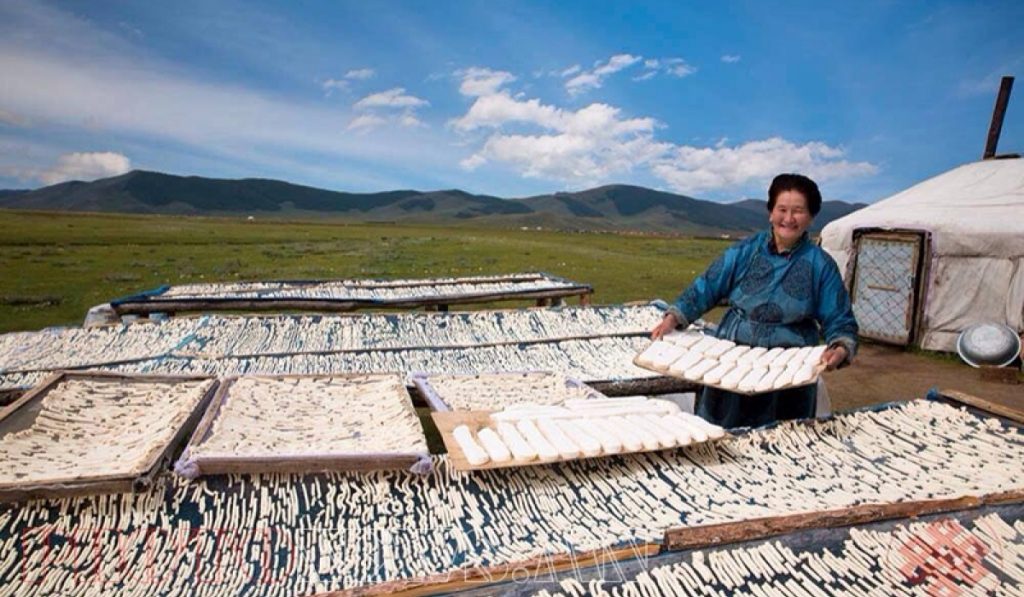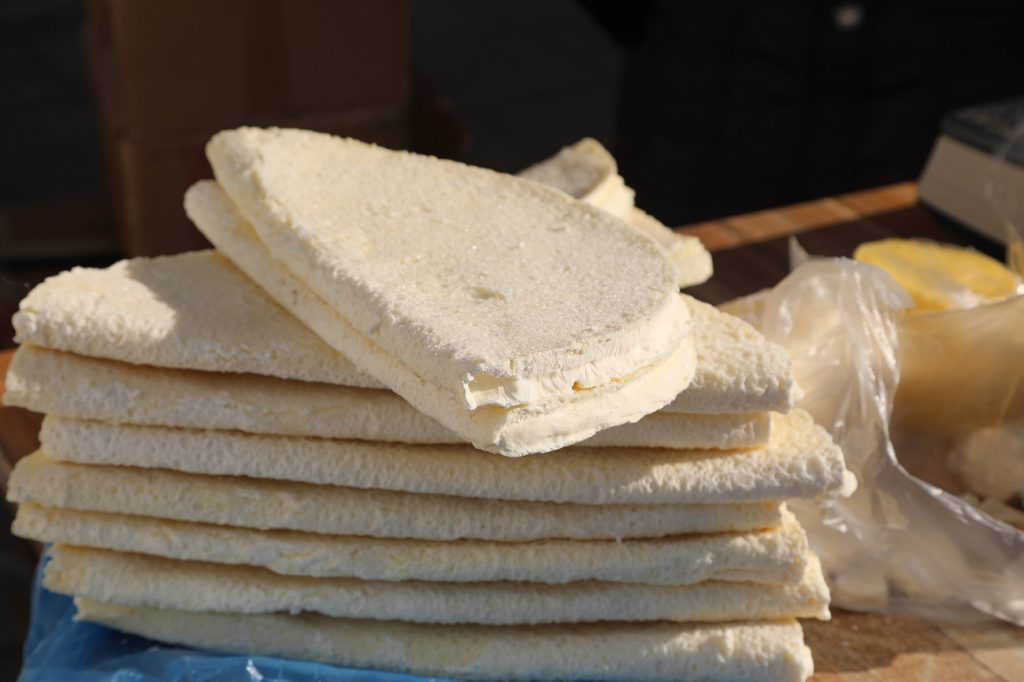It’s easy to presume meat is the only food nomadic Mongolians have. Well, they do have vast herds of domesticated animals, and they do eat meat. But the daily source of nutrition is fulfilled by dairy products; the most important source of food from herd animals possibly is milk and milk derivatives.
Mongolians turn milk into a variety of different eats and drinks: ferment milk to make cheese, yogurt, protein concentrates aaruul, eezgi, airag and aarts, separate its cream for urum, and even make vodka from milk. All of these foods are called tsagaan idee, or “white eats.”
There’s even a saying – “consume white eats untill your insides whiten;” the white analogy being used to represent health and freshness. It also suggests not to eat meat regularly and give your stomach a rest. For Mongolians, summer is the most suitable season to enjoy dairy products. You can visit any family living in more remote regions of the country, and they will welcome you with fresh tsagaan idee. Mongolians are known for their generosity and hospitality, and you can even take part in making tsagaan idee yourself.
Drink hot aarts during the winters and cold airag for the summers for an unforgettable impression of your experience in Mongolia. Do not be surprised if the matron of the family makes an offering of fresh tsagaan idee to the skies – it signifies the ultimate respect for you and good fortune on your travels and endeavors.

Most tsagaan idee are white because its base product is milk. Its bright white color motivates bright and happier thoughts and gives off bright and happy impressions. Milk is very fragile – its quality can quickly degrade. Therefore, hard work is required and great care must be taken when making dairy products. Methods of preparing and making the products vary by regions depending on weather and the ancestry of animals from which the milk came from.
It wouldn’t be true to say every single Mongolian can make traditional dairy products, but it also wouldn’t be true to say any non-Mongolian can successfully make one. The thousands of years old tsagaan idee is an inseparable part of Mongolian culture, and a part of nomadic way of life. Organic qualities and contribution to better health have been studied by scientists from all around the world.
There’s even a case study where the remarkable strength and stamina of Mongolian wrestlers in the 2,000-year old Japanese sumo might actually be attributed to airag, or fermented mare’s milk. Personally, I believe anyone who made tsagaan idee his daily consumption is a healthy, resourceful and a kind person. If you meet a Mongolian with bright white teeth, you can be sure he grew up eating tsagaan idee.
There is a study which indicated that at the beginning of 20th century, the diet of a Mongolian consisted of 55 percent tsagaan idee and 30 percent meat. In later years, when the nomads turned into city dwellers, consumption of tsagaan idee decreased while meat and non-organic and chemically refined foods overtook the diet.

The negative effects of this tendency has since become obvious, and Mongolians are striving towards a diet with more tsagaan idee. Today, you can buy tsagaan idee from food stalls in nearly any grocery store or supermarket in Ulaanbaatar. If it isn’t obvious at first, you can ask if they serve tsagaan idee from restaurants, hotels and guesthouses. I’m confident they won’t disappoint you.
Come to Mongolia, and discover firsthand why Mongolians hold tsagaan idee in such high esteem, why they offer them to nature and the stars, how Mongolians learn to be generous and welcoming from a young age, and even understand why most tsagaan idee are white in color.
Visit: Available Tours
Resource: mongoliatravel.guide

